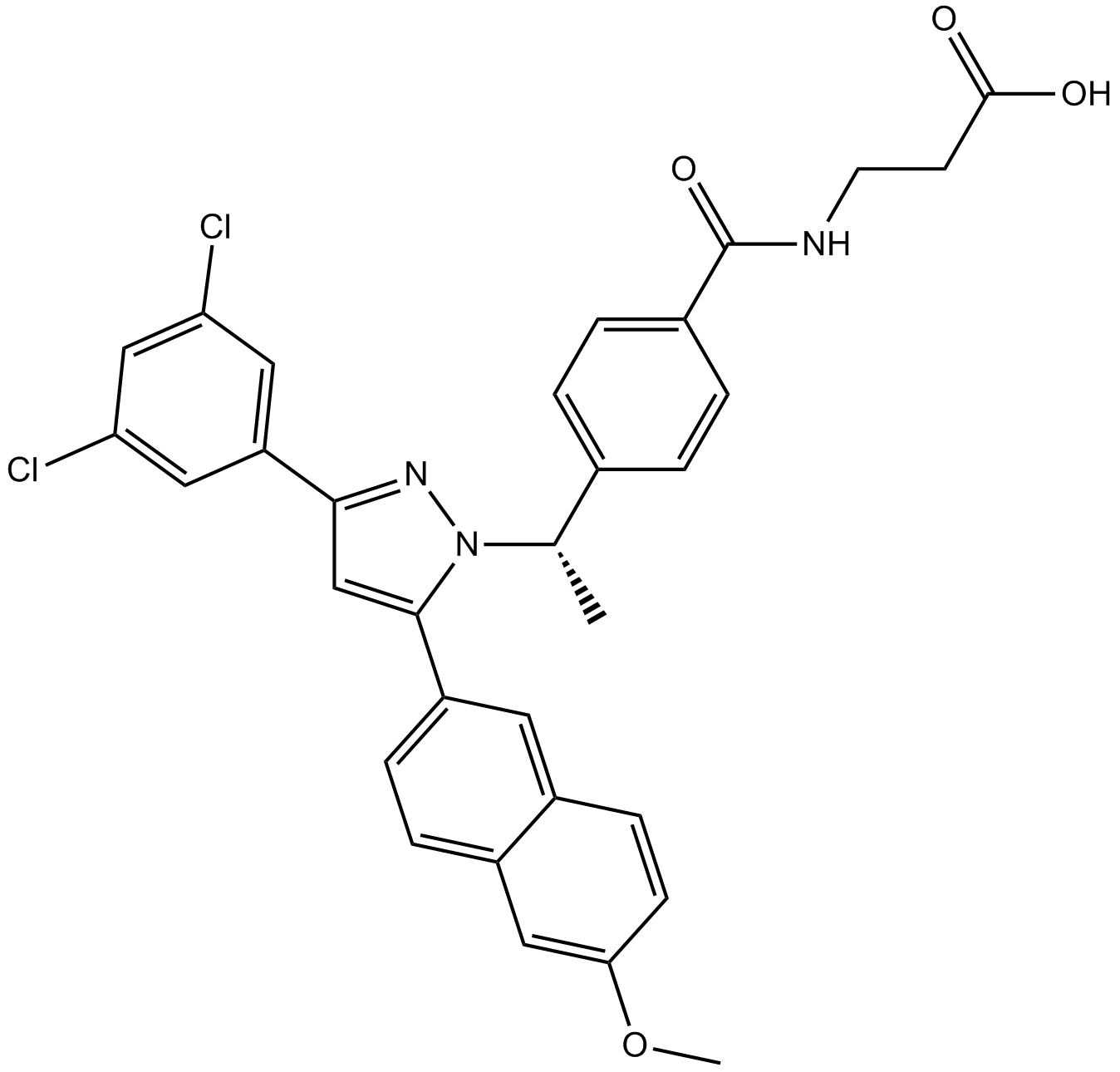MK 0893 |
| Catalog No.GC14793 |
Products are for research use only. Not for human use. We do not sell to patients.

Cas No.: 870823-12-4
Sample solution is provided at 25 µL, 10mM.
MK 0893 is an inhibitor of both glucagon receptor and IGF-1R with IC50 values of 6.6nM and 6nM, respectively [1, 2].
In a receptor binding assay using a membrane preparation from a CHO cell line expressing the human GCGR, MK 0893 is shown to inhibit the bing between glucagon and the GCGR(IC50 value of 6.6 ± 3.5nM) and subsequently induce cAMP production(IC50 value of 15.7 ± 5.4nM). MK 0893 is proved to be a competitive, reversible GCGR antagonist, as evidenced by Schild Analysis in this cell line. And in an acute glucagon challenge model in hGCGR mice, MK 0893 is found to be active in blunting glucagon-induced glucose excursion. All these effects make MK 0893 be a potential oral treatment for type 2 diabetes. Additionally, MK 0893 is also reported as a potent, selective, and orally bioavailable IGF-1R inhibitor with robust in vivo efficacy in an IGF-driven mouse xenograft model. [1, 2].
References:
[1] Yusheng Xiong, Jian Guo, Mari R. Candelore, Rui Liang, Corey Miller, Qing Dallas-Yang, Guoqiang Jiang, Peggy E. McCann, Sajjad A. Qureshi, Xinchun Tong, Shiyao Sherrie Xu, Jackie Shang, Stella H. Vincent, Laurie M. Tota, Michael J. Wright, Xiaodong Yang, Bei B. Zhang, James R. Tata, and Emma R. Parmee. Discovery of a Novel Glucagon Receptor Antagonist N-[(4-{(1S)-1-[3-(3,5-Dichlorophenyl)-5-(6-methoxynaphthalen-2-yl)-1H-pyrazol-1-yl]ethyl}phenyl)carbonyl]-β-alanine (MK-0893) for the Treatment of Type II Diabetes. Journal of Medicinal Chemistry. 2012, 55: 6137-6148.
[2] Meizhong Jin, Andrew Kleinberg, Andy Cooke, Prafulla C. Gokhale, Kenneth Foreman, Hanqing Dong, Kam W. Siu, Mark A. Bittner, Kristen M. Mulvihill, Yan Yao, Darla Landfair, Matthew O’Connor, Gilda Mak, Jonathan A. Pachter, Robert Wild, Maryland Rosenfeld-Franklin, Qunsheng Ji, Mark J. Mulvihill. Potent and selective cyclohexyl-derived imidazopyrazine insulin-like growth factor 1 receptor inhibitors with in vivo efficacy. Bioorganic & Medicinal Chemistry Letters. 2011, 21: 1176–1180.
Average Rating: 5 (Based on Reviews and 30 reference(s) in Google Scholar.)
GLPBIO products are for RESEARCH USE ONLY. Please make sure your review or question is research based.
Required fields are marked with *




















